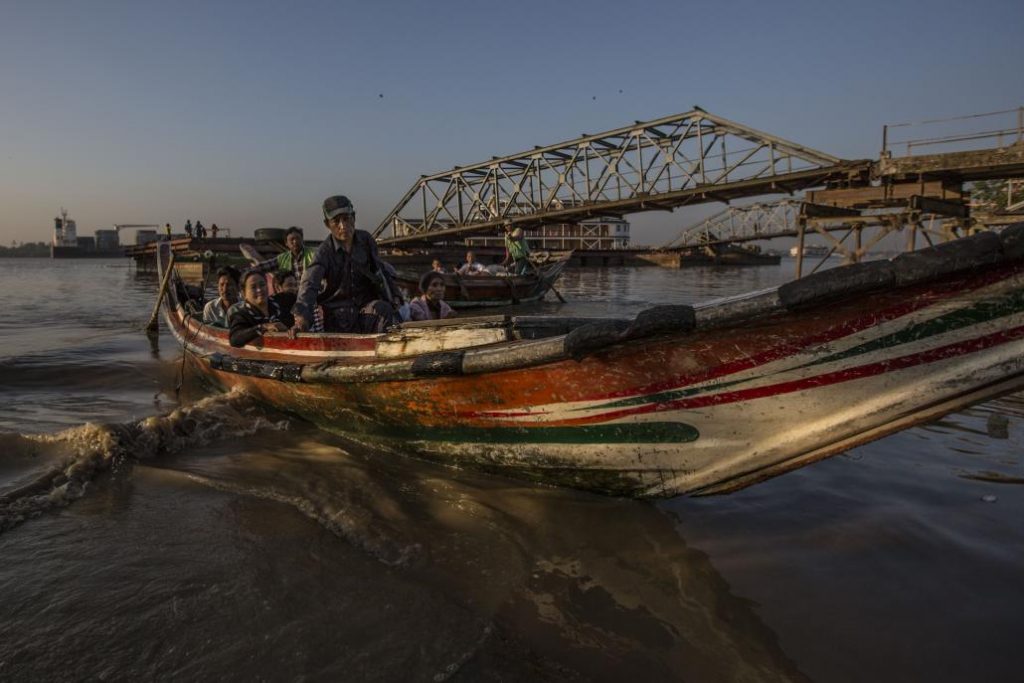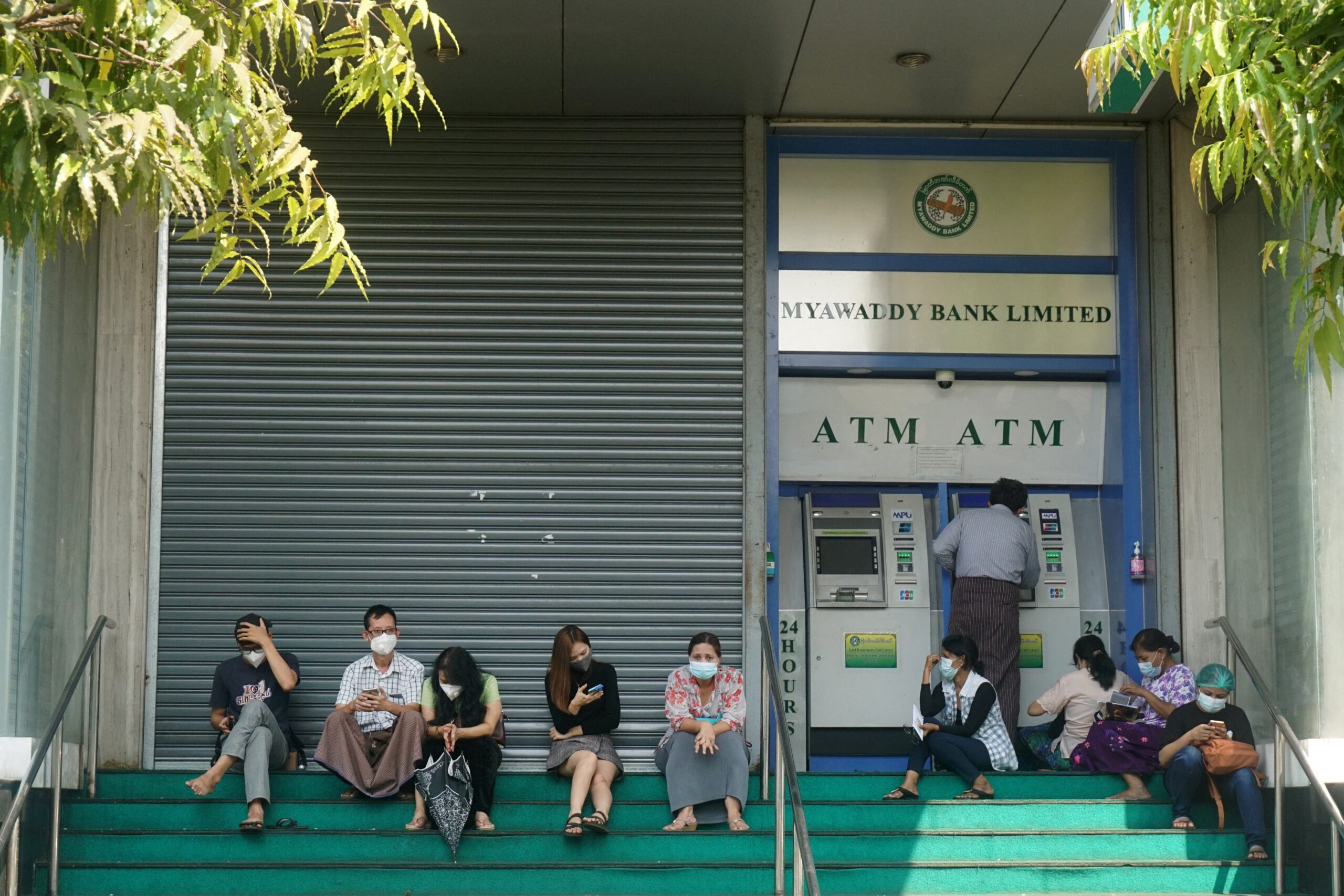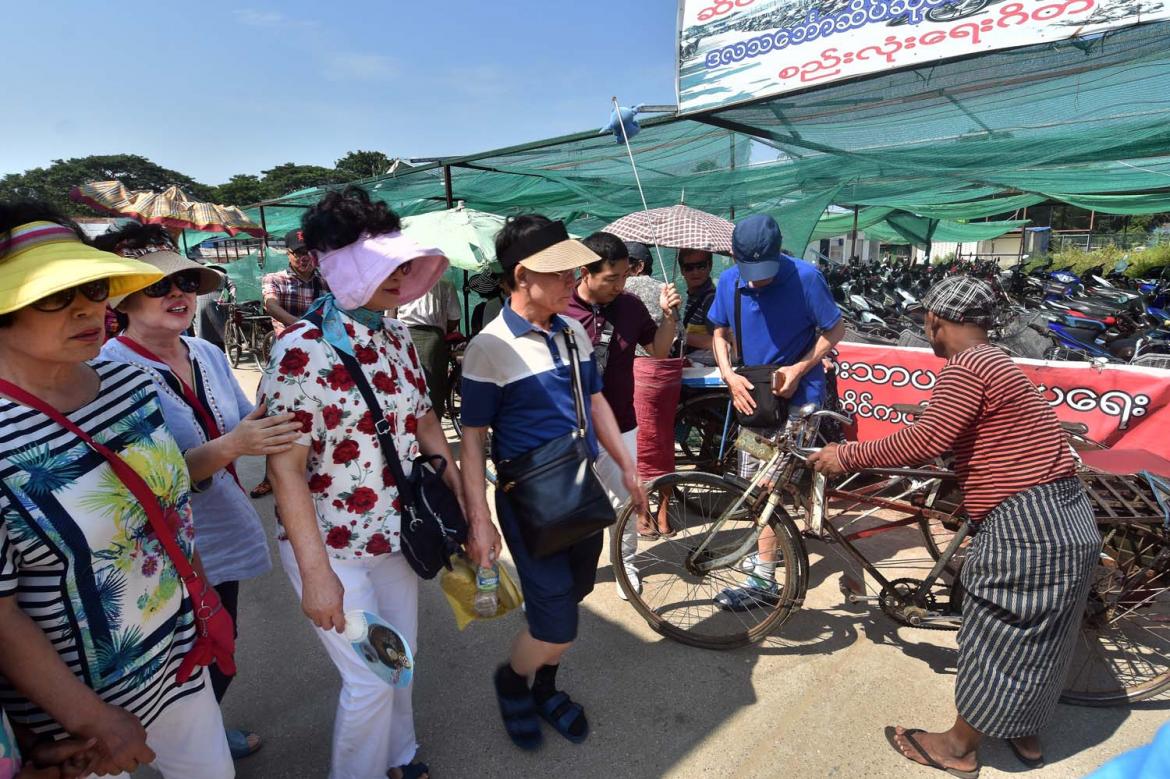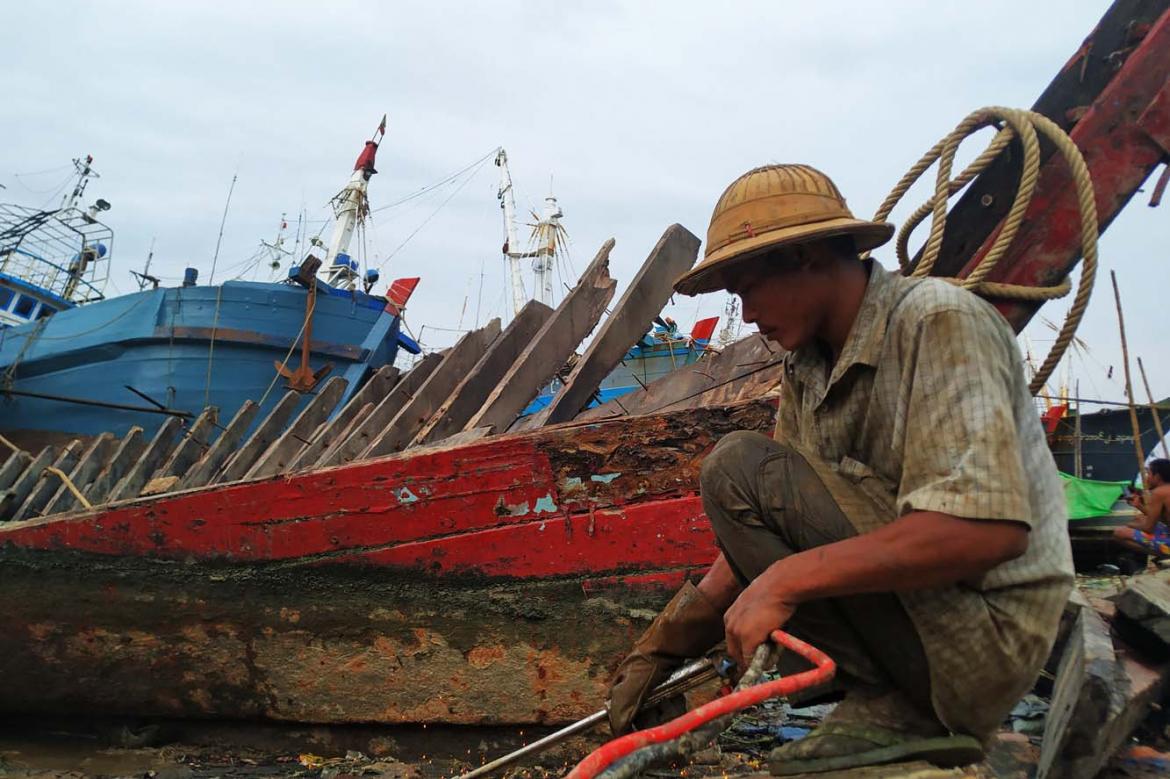The repercussions from a North Korean terror attack in Yangon more than 30 years ago continue to be felt in the commercial capital, depending on who you talk to.
By JACOB GOLDBERG & AYE MIN SOE | FRONTIER

A thanban lands at Botahtaung jetty. Although they are the fastest way across the river, foreigners are not allowed to board these boats. (Andre Malerba / Frontier)
Every day, small, wooden motorboats carry thousands of commuters across the Yangon River – but no foreigners. They are banned from boarding the quaint, nimble vessels, and are instead directed to larger passenger ferries.
In another example of segregation on the Yangon River, the bigger ferries have signs designating a small area of the deck as “Foreigner Only.” Buddhist monks often occupy these spaces. Foreigners rarely take advantage of them.
The smaller boats from which foreigners are banned are known as thanban and hundreds of the brightly painted craft line the shore of Yangon’s riverside Seikkan Township, waiting for up to 10 passengers to file aboard before making the short trip across the river to Dala Township.
Support more independent journalism like this. Sign up to be a Frontier member.
Every passenger is a Myanmar citizen, or at least looks like one. Western tourists hoping to visit the Snake Temple across the river or the former police commissioner’s house in Twante Township, where George Orwell is thought to have lived, will be forced to take a ferry.
The reason for this unusual discriminatory policy has nothing to do with safety or any tangible difference between Myanmar and foreigners, say the men who drive the thanban. They say they turn away foreigners because of a North Korean terror attack in Yangon.
“The Koreans put a bomb on a boat 10 or 15 years ago,” said a thanban driver named Peter who plies the route between Pansodan Jetty and Dala. “Now there is a law saying we cannot carry foreigners.”
Nothing in Peter’s statement is accurate. The North Koreans did not put a bomb on a boat and the incident to which he referred took place in 1983. If there is a legal ban on foreigners travelling in a thanban, law enforcement officials are not aware of it. Several other thanban drivers also said they could not accept foreign passengers and offered similar explanations, though none could recount the exact details of the incident that had apparently resulted in the ban.
The incident to which the thanban drivers incorrectly referred took place when sinister was the norm and Burma was an international pariah.
After the Democratic People’s Republic of Korea and the Republic of Korea signed a ceasefire in 1953, a covert war ensued between them, with spies from each side infiltrating the other’s borders, often resulting in assassinations.
In one incident, the war seeped out of the Korean Peninsula and left its mark on Myanmar. It happened on October 9, 1983, during a visit by the South Korean president, Chun Doo-hwan, who planned to lay a wreath at the Martyrs’ Mausoleum in Yangon to commemorate independence hero General Aung San. As the president’s entourage gathered at the mausoleum, a bomb hidden in its roof was detonated, killing 21 people and wounding 46. The 17 South Korean fatalities included three government ministers, as well as presidential advisors, journalists and security officials. Three journalists were among the four Myanmar who were killed. President Chun survived because his car was delayed in traffic.
After watching the blast from a distance, the three North Korean agents who planted the bomb fled to the Yangon River, where they expected to find a speedboat that would take them to a North Korean cargo ship.
The boat was not there. The agents split up and walked or swam down the river, not knowing that the cargo ship was not there, either. Myanmar police and troops intercepted the bombers. One was killed in a gunfight, and the other two were arrested.
According to Peter and the other thanban drivers, the bombing led to the enactment of a law banning motorboat drivers from carrying foreigners on the river. However, evidence of the law remains elusive.
Two police officers stationed in Pansodan Jetty, where most foreigners begin their journeys across the river, both said they had never heard of a law against shuttling foreigners on thanban. Officials at the Myanma Port Authority and at the Inland Water Transport also said they knew nothing of such a law or of any North Korean attack in Yangon.
“I have been with this department for five years, and I have never heard of a law against taking foreigners on the thanban,” said Police Colonel Khin Maung Than, the police chief of Seikkan Township, in which most of Yangon’s docks are located. “I have heard about the North Korean attack, but I don’t know the details.”
Prominent lawyer U Kyaw Zeya weighed in on the issue, saying that the ban on foreigners riding thanban might be related to the Martyrs’ Mausoleum bombing in 1983. “I remember that a North Korean ship anchored at sea near Yangon [was] waiting for North Korean bombers who would come to it by thanban,” he said.
U Kyaw Zeya also offered his own theory for the ban on foreigners. “Lifebuoys on thanban in the river are very dirty and old, so they are considered unsafe for passengers. That’s why foreigners are not allowed to ride them,” he said.
“In fact, there is no law banning foreigners from riding a thanban in the river. But there must be a community order.”
Despite the lack of evidence of any anti-foreigner law, thanban drivers still believe there are consequences for carrying non-Myanmar citizens.
“We will get suspended for a day if we are caught by the authorities,” Peter said.
Nonetheless, there are some drivers who throw caution to the wind in the interest of an extra buck. One thanban driver said he often takes foreigners on river tours but avoids docking at the central Dala Jetty for fear of being seen by the authorities. He said he sometimes makes up to US$20 from the tours.
The North Korean regime has never confirmed its involvement in the 1983 bombing, and the Myanmar government has also remained silent on the issue.
One of the two North Korean bombers who survived the gunfight was executed. The other received a life sentence and died in Insein prison in 2008.
Myanmar and North Korea quietly re-established military relations in the 1990s and full diplomatic relations in 2007. Even though both countries seem to have moved on, the effects of that 1983 bombing continue to be felt 32 years later, preventing foreigners from taking small wooden boats across the Yangon River.







